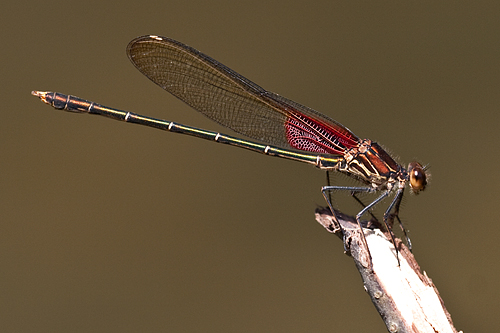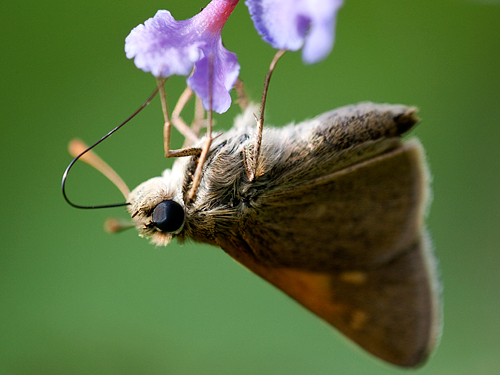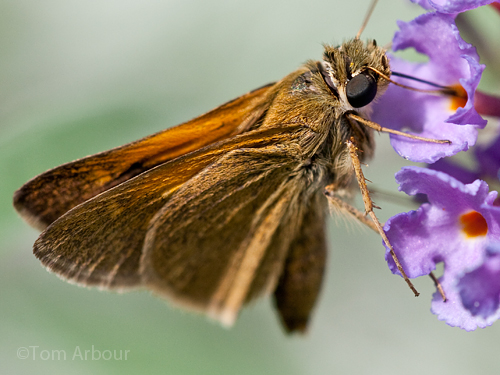Sunday, July 25, 2010
Macro Nature Photography for the Canon Camera System
This post is primarily me pontificating on camera gear and techniques- it's different from my usual post, but if you like it, I might discuss nature camera gear and offer photography tips more frequently. All images here were taken with the recently discontinued Sigma 180mm f/3.5 EX DG IF HSM APO. -Tom
Up until Friday afternoon, I was taking my insect photographs with a variety of lenses. I use the Canon system, and my primary go-to macro lens was the ef-s 60mm f/2.8 which is designed for Canon's line of crop sensor cameras like the Rebel series and the XXd series (30d, 40d, 50d, and now the 7d). The Canon 60mm ef-s lens is small, light, extremely sharp, and focuses quickly. Perhaps the best feature about the lens is that it is small enough to use my digital rebel's on-board popup flash, which I often diffused with tissue paper or bounded downwards with a small reflector. Using this setup, I could get quick, easy photographs of small insects.
However, the downside of this lens is that I had to have the camera very close to my subjects. This worked out OK, but I often would scare the insect that I was trying to photograph and it would fly away. For dragonfly and butterfly photography, I was using telephoto lenses that could get me fairly large magnifications, especially if I cropped the images a little bit. But I often couldn't fill the entire frame with a small butterfly or damselfly- and I certainly couldn't get super tight close-ups with mega-detail like yesterday's powdered dancer and prey image.
So I needed another option. I needed a telephoto macro lens. Canon makes such a lens, the 180mm f/3.5L, a super duper lens that is currently selling for $1300. Although I have no doubt this is an incredible lens, I just didn't want to spend that much cash, especially when a seemingly viable alternative exists. After looking at example photographs and reading a review by Juza, I decided that the Sigma 180mm f/3.5 EX DG IF HSM APO Macro in a Canon mount would help me get the type of photographs that I wanted.
This lens was recently discontinued by Sigma, but B&H photo is still selling new copies. Since I am "cheaping out" on this lens in the first place, I decided to look for a used copy, and sure enough, KEH camera brokers had what I was looking for. I placed my order, and my lens arrived Friday afternoon.
After a few dozen shots and copious "chimping" (photographer's speak for looking at photos on the back of your camera), I knew I was going to love this lens. The sharpness is amazing, and so is the color and contrast. And after some concerns that the lens would be to big and heavy, I found it to be quite light compared to my Canon 100-400L. And I could simply get images that I couldn't get with any of my older lenses.
The Sigma 180 isn't an easy lens to use- the depth of field is extremely narrow and the long focal length mean I'll need to use a tripod, have great light, or use high ISO's. But only after a weekend shooting with this new lens, it's just amazing!
Tom
Labels:
insects,
macro,
photography
Subscribe to:
Post Comments (Atom)






The lens you described does an excellent job on the subjects shown here on the post. I would say it is among the best I have seen. I checked on Amazon.com and the lens is selling for $599.00 while B&S had it for $699.00. I would think about getting one if I was able to get outside more. As it is I just use try to use what I have in the past. Not the best but it seems to work.
ReplyDeleteHere is a link to one of the bumblebee macros on my Flickr account.
http://www.flickr.com/photos/oldmanlincolnphotography/4794316282/in/set-72157624162969463/
I'm a Nikon guy and was tempted by 150/180 sigma macro and if anyone had had one in stock that's what I would be using today so I think you made an excellent choice. The extra few inches is great with insects I think you will be amazed at what a difference it will make. A tripod/monopod is you friend with a macro lens this long. Watch your shutter speed as well especially if there is the slightest breeze as subject movement really rears it's ugly head at this focal length.
ReplyDeleteTom:
ReplyDeleteI've used the Sigma 180mm macro lens for several years (I didn't want to pay $1500 for the Nikon 200mm Micro-Nikkor). It's a superb lens, every bit as sharp as the Nikkor, and I've used it to photograph almost two-thirds of Ohio's dragonfly and damselfly species.
Trying to use a tripod and TTL metering with natural light for dragonfly photography is an exercise in self-punishment and frustration. I prefer to hand-hold the camera and use a Nikon SB29 ringlight, using manual mode. I use the full-power setting for large dragonflies, and the 1/4-power setting for smaller damsels. I set my shutter speed to 1/250th second to eliminate any ambient light ghosting, and set the f/stop (from f/8 to f/16) based on the distance from the subject. The ringlight provides shadowless lighting and a nice diffuse background.
Good luck with your dragonfly photography.
Ian Adams
www.ianadamsphotography.com
Wonderful macros!! Congrats on the new lens!
ReplyDeleteI love the info here, definitely a major help to me. Those are such wonderfully crisp and clear shots!
ReplyDeleteI appreciate this discussion. I have had a 7d for a year and have been fussing over not affording a $1500 macro/telephoto lens. I'll have to follow up on this. Thanks for the detail and for all the other comments. Any following comments and details will also be appreciated.
ReplyDeleteGeez, Tom... that damselfly photo is so good it makes me never what to take nature photos again, at least for a second. OK, I'm over it, and will continue to take my second-rate photos.
ReplyDeleteNice work.
Great photos, and I for one always enjoy gear geeking!
ReplyDeleteI use the Canon 100mm f/2.8 macro for wildflowers and occasionally bflies & dflies, but the focal length isn't much good for living things.
I hadn't considered the Sigma - may have to give it a look, as I'd also like a longer macro for product photography, and like you I find the price of Canon's 180L a little (OK a lot) steep.
Of course there's also the newish Canon 100mm f/2.8 L IS macro, which you could slap a TC on, but it's barely cheaper than the 180L.
Hi Tom very interesting and inspiring. I too have been considering a lens like this, to photograph pollinating insects and also for a different reason: photographing subjects at ground-level (mosses, as the longer focal length will allow shooting at a less acute angle. That side-by-side review with the Canon is a pleasant surprise.
ReplyDeletePossible clarification re: depth of field. I don't believe the d.o.f. of this lens is especially shallow. As John Shaw explains on p. 32 of "Closeups in Nature : (p. 32) "If the image size and aperture remain the same, all focal length lenses give the same depth of field."
Wow...the details are just beautiful. I love the info...
ReplyDeleteThank you for the feedback and comments.
ReplyDeleteFor those of that you that don't know Ian- He's a pro photographer based in Cuyahoga Falls, Ohio, right in my old backyard- Ian is THE Ohio photographer when it comes to nature and landscape images of our great state. I've enjoyed Ian's calendars and books over the years- I personally own several. Please visit his site and support his work. He's a pro's pro.
When making this purchase decision, I knew Ian uses this lens. Ian, we chatted a little bit after your 2008 OOS presentation- it was great. The Sigma 180 does have a few knocks out there on internet reviews, like it isn't quite as sharp wide open and it can have a bit of Chromatic Aberation (which I haven't yet noticed, by the way), but all throughout my research, I just kept saying to myself- if this lens is good enough for Ian Adams, it's darn well good enough for me. So thanks Ian, you're an inspiration to me and all of us newly minted digital photographers that have suddenly crowded your world.
Bob- Since I've usually been shooting bugs with long telephoto lenses, or short telephoto lenses and then cropping the images, rather than shooting them at full frame, it's harder to get the entire insect in focus when I've got it filling the frame. I've really got to watch my planes of focus. One of the BIGGEST misnomers in all of photography is that lenses with longer focal lengths have shallower depths of field- it isn't true, it's just that you're isolating a smaller portion of the background and therefore the depth of field appears smaller.
I may have run out of room. Thank you everyone!